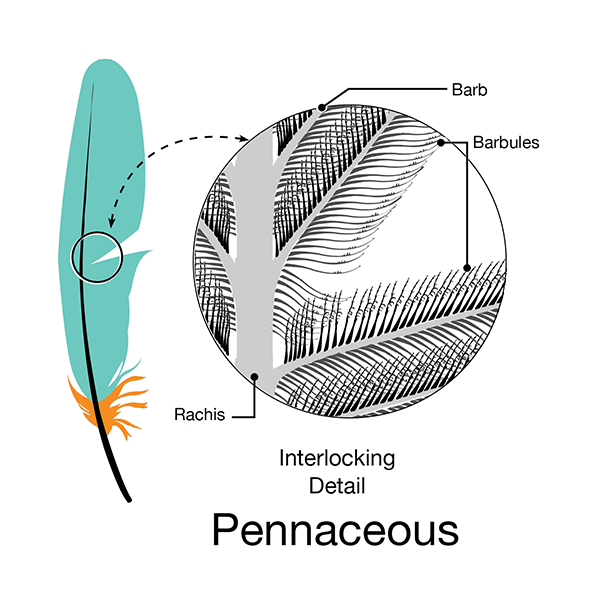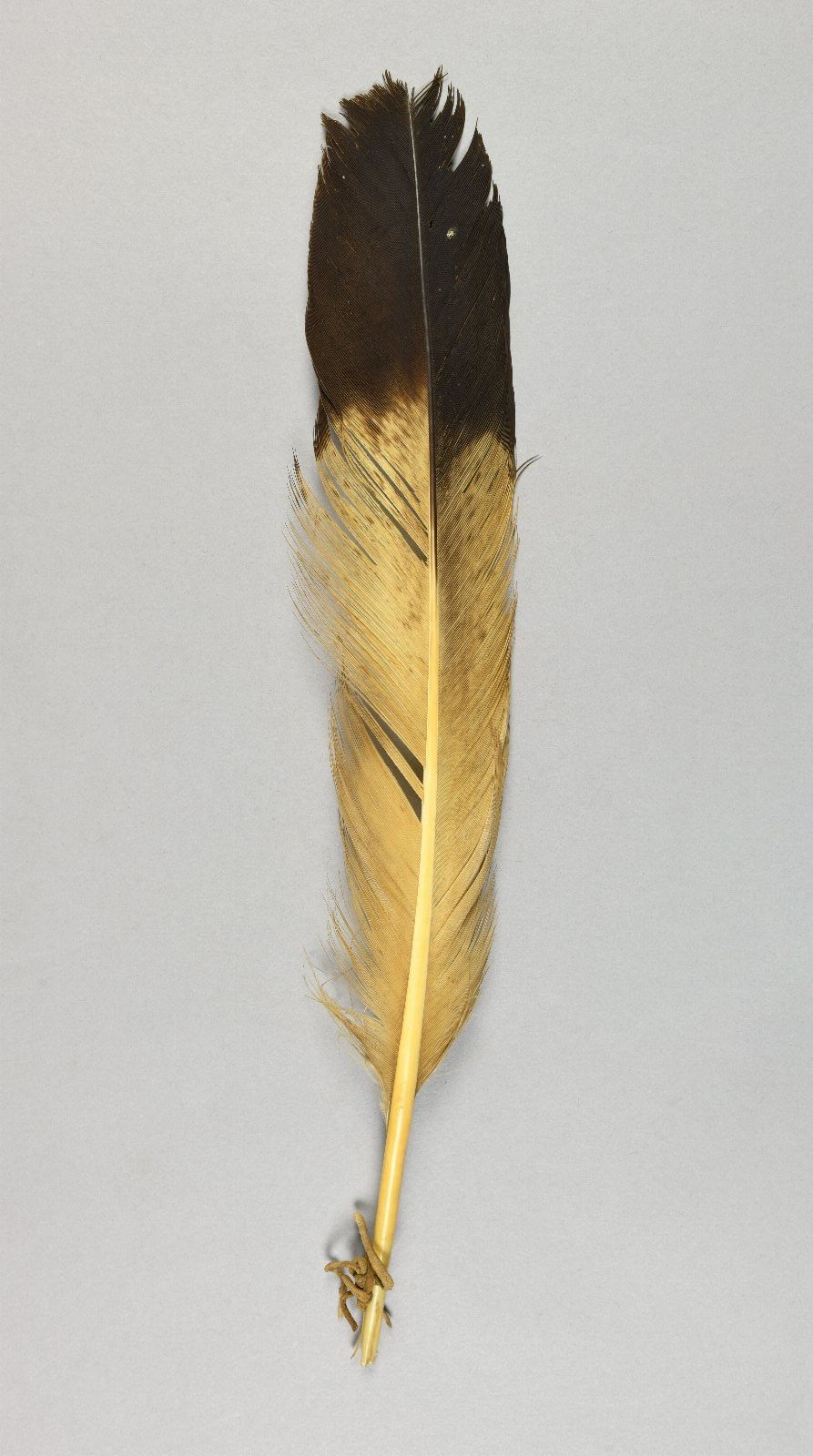feather
n. /ˈfɛðə/

We find beauty in paradox.
The simple act of representing in concrete form that which is the definition of delicacy and lightness, holds great fascination. To approach such a familiar subject, one with such a long history both symbolic and aesthetic, poses a great challenge to the engaged sculptor.

Pennaceous feather structure
Cornell Lab of Ornithology
“Although feathers come in an incredible diversity of forms, they are all composed of the protein beta-keratin and made up of the same basic parts, arranged in a branching structure. In the most complex feathers, the calamus extends into a central rachis which branches into barbs, and then into barbules with small hooks that interlock with nearby barbules. The diversity in feathers comes from the evolution of small modifications in this basic branching structure to serve different functions.

Plumulaceous feather structure
Cornell Lab of Ornithology
Downy feathers look fluffy because they have a loosely arranged plumulaceous microstructure with flexible barbs and relatively long barbules that trap air close to the bird’s warm body. Pennaceous feathers are stiff and mostly flat, a big difference that comes from a small alteration in structure; microscopic hooks on the barbules that interlock to form a wind and waterproof barrier that allows birds to fly and stay dry. Many feathers have both fluffy plumulaceous regions and more structured pennaceous regions.”
Cornell Lab of Ornithology

The plumulaceous structure of the barn owl’s feather.
Barn Owl Trust

Eagle feather worn in hair by man in Big House Ceremony.
Penn Museum
Symbolically, the use of feathers can denote power and status, a mainstay of the milatarian garb, everyone from the Inca, the Roman, to the war bonnets of the American plains Indians have featured the feather as a highly potent and revered symbol. Those who are honoured with the right to wear such valued feathers as those of the eagle, would have done so by exhibiting valour in battle or perhaps more benign political or diplomatic acts that help the community prosper.

Kaiser Wilhelm II on his birthday congratulated by Tirpitz.
More recently the modern armies of Europe would continue this tradition by utilising the feathers of vultures, swans and egrets to adorn their bicorn hats. Indicating rank when undertaking ceremonial duties.
However the feather also has an interesting symbolic military history of a different kind; soon after the outbreak of the First World War in 1914 Britain saw the founding of the order of the white feather, a propaganda campaign aimed at shaming unenlisted men into signing up for the fight. Women (even including Emmeline Pankhurst) would hand white feathers to uninformed men as an indication of their supposed cowardice, a very public accusation of a dereliction of duty and a clear encouragement to sign up.

Winged genie, c. 870 BC, with inscription running across his midriff.
Wikipedia
Perhaps you have heard that feathers appear when the angels are near. This superstitious Christian motto shows more the meaning of feathers. Again, this time they denote connection with spiritual beliefs. Coming from angels they represent freedom and transcendence from earthly concerns, as of course angels are winged beings.
The image of the feather in Christian sculpture is manifold but by no means represents the start of the tradition of sculpting these tricky subjects. The Assyrians, more interested in depicting power, carved their winged figures in stone dating from around 870 BCE. The feathers here are highly stylised, yet still they impart a sense of potential and dynamism. A trip to the British Museum not complete without a visit to these incredible reliefs, the Assyrian feather remains a constant reference.